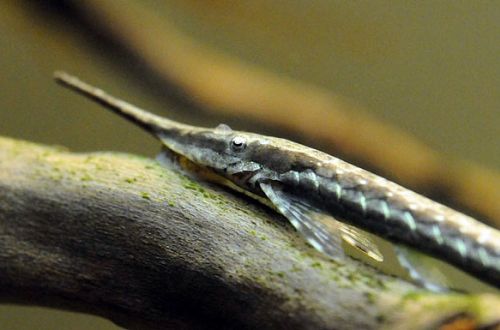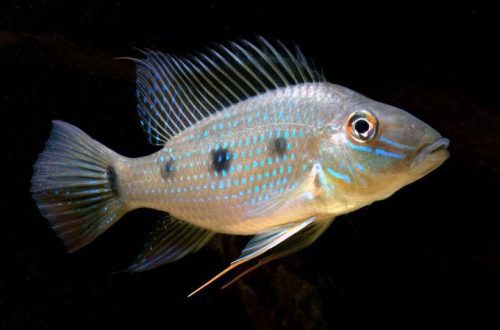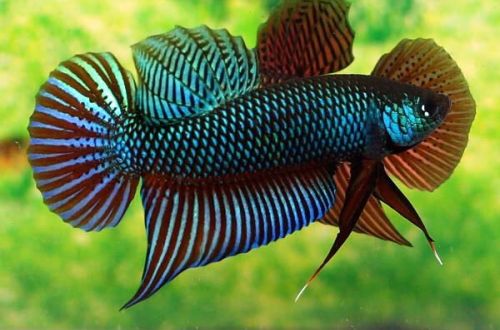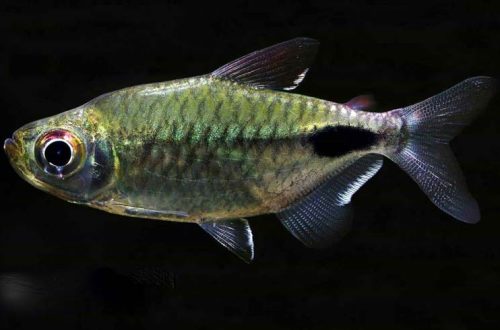
Farlovella
Farlovella, scientific name Farlowella acus, belongs to the family Loricariidae (chain or loricariid catfishes). A species of catfish, unique in its form, outwardly resembles the root or stem of an aquatic plant. Such effective disguise perfectly hides it in its natural habitat. In the home aquarium, it perfectly adapts to any community of fish, with the exception of aggressive species.

Habitat
A representative of the South American continent, lives in the slightly flowing reservoirs of the Amazon River basin in the flooded substrate of the tropical forest between numerous snags, trunks and tree roots.
Description
A narrow elongated body with an elongated head and a long snout, the mouth is located on the lower part, sturgeons have a similar structure. Males are distinguished by a slightly wider head, in addition, during the mating season, “bristles” known as Odontodes grow on it. Catfish is completely protected by skin and bone plates. The color varies from olive green to yellow-brown, with a dark wide stripe stretching along the entire body.
Food
In its natural habitat, Farlovella feeds mainly on plant food and small crustaceans, worms. At home, it is recommended to serve specialized feeds with a high content of herbal supplements (more than 50% of the composition). Carefully study the composition before buying this or that food, in addition, it must be sinking, since the catfish feeds at the bottom.
Feed 2 times a day, in a well-designed aquarium, an additional food source in the form of algae will be enough.
Maintenance and care
Proper tank design is key. The substrate is sandy or fine gravel with a large number of large-leaved plants with a powerful root system. The presence of snags, pieces of wood is mandatory, they serve not only as shelters, but also as an excellent basis for the growth of algae – another source of food. The composition can be built around one very large plant and driftwood, the rest of the design elements will be auxiliary.
The catfish is unpretentious, prefers clean soft water, the pH value does not matter. For more information about pH and dH parameters and how to change them, see the “Hydrochemical composition of water” section. The aquarium should be equipped with the following minimum set of equipment: filter, heater, aerator, lighting system.
Weekly maintenance is reduced to renewing part of the water by 15–20% and cleaning the soil from organic waste (excrement, uneaten food residues). It is worth noting that a productive filtration system allows you to increase service intervals up to 2-3 weeks.
Behavior
Peaceful calm species, constantly located near the bottom at the roots of plants in search of food or hides in snags. In a large aquarium, it can easily get lost. It can live both alone and in a group of related species. As neighbors, it is worth giving preference to the same peaceful fish, despite its armor made of bone plates, Farlovella will not be able to withstand aggressive species.
Breeding / breeding
In a balanced aquarium, catfish are able to give birth at any time of the year, the greatest probability is between November and March, i.e. in winter. This is consistent with their natural cycle.
During the mating season, the male chooses a place for future nesting, for example, the wall of a tank. Cleans it and invites the female, who lays 60-80 eggs, attaching them directly to the glass. The fry appear after 6-10 days, depending on the water temperature. Juveniles independently find food in the form of various organics and microorganisms – constant companions of any healthy ecosystem.
Fish diseases
This species is not characterized by any specific diseases. Problems begin only in neglected aquariums and / or feeding poor quality food. In addition, infection can also occur through contact with already sick fish. Read more about symptoms and treatments in the Aquarium Fish Diseases section.





